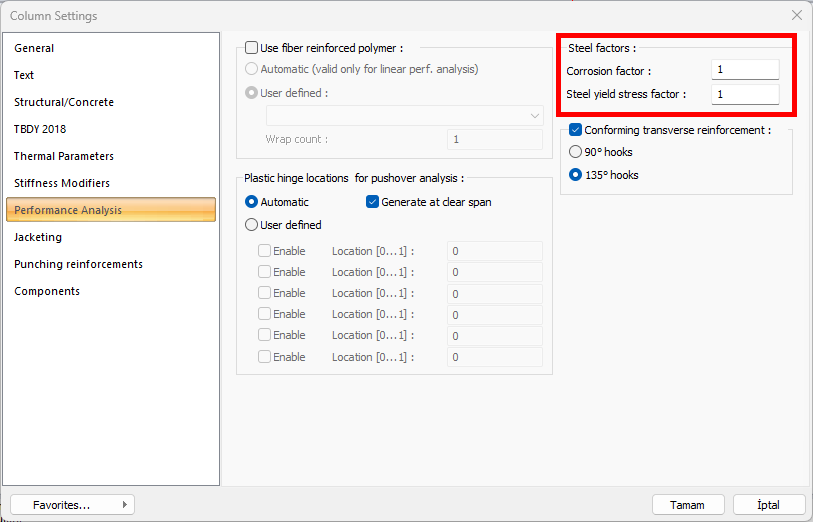15.2.4
If the level of knowledge obtained from the buildings for which performance analysis will be made is limited according to TBDY 15.2.4 , the knowledge level coefficient is taken as 0.75. Information level coefficients are used to calculate the capacity of reinforced concrete members in the performance analysis (linear or non-linear) of existing buildings.
The knowledge level coefficient is determined by the user.
The reinforcement corrosion coefficient and insufficient clamping length yield stress coefficient are determined by the user.
Material definition and material strengths are entered by the user.
After selecting the material definition, information level coefficient, reinforcement corrosion and clamping length yield stress coefficient, section capacities and limit values are automatically calculated.
The reinforcement realization coefficient, which expresses the ratio of the existing reinforcement to the minimum reinforcement in the reinforced concrete walls and columns, for which reinforcement is determined, should be determined. This coefficient, which is used to determine the shear and column capacities, cannot be greater than 1. This coefficient will be applied to all other walls and columns for which reinforcement is not determined, and possible reinforcement amounts will be determined. Only the reinforcement required under vertical design loads will be used for beams. Elements with corrosion observed in the reinforcement will be marked on the plan and this will be taken into account in the element capacity calculations.
It is explained in TBDY 15.2.4 for limited information level .
The figure below shows from which section the reinforcement corrosion factor and insufficient clamping length yield stress factor values are defined.

